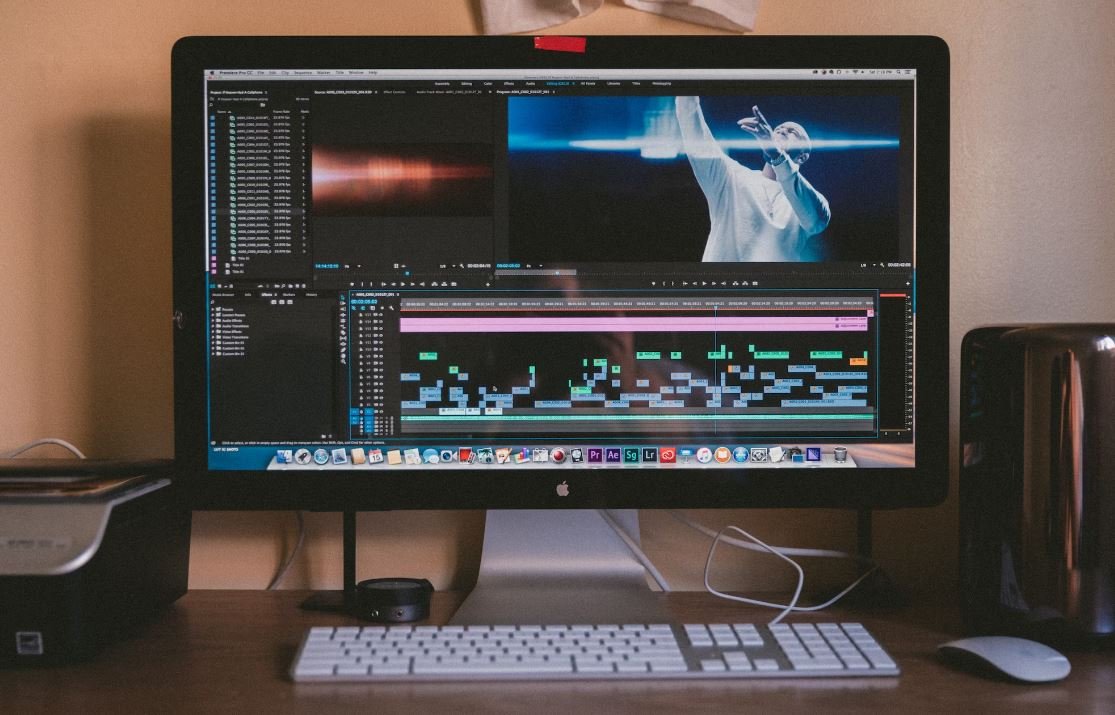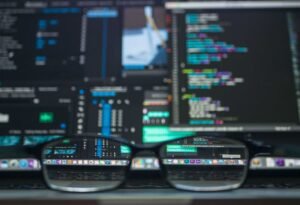Deepfake AI Technology
Deepfake AI technology is a rapidly advancing field that involves the creation of synthetic media in which a person’s likeness is convincingly altered or replaced by someone else’s, using artificial intelligence techniques. It has gained significant attention in recent years due to increasing concerns over the potential misuse and ethical implications of this technology.
Key Takeaways
- Deepfake AI technology creates highly realistic synthetic media.
- It relies on advanced artificial intelligence techniques to manipulate and alter video content.
- Deepfakes have the potential for both positive and negative applications.
- Regulation and awareness are crucial to address the ethical concerns associated with deepfakes.
The Rise of Deepfake AI Technology
**Deepfake AI technology** has seen significant advancements in recent years, allowing for the creation of extremely convincing **synthetic videos**. This technology utilizes sophisticated algorithms, such as **generative adversarial networks (GANs)**, which enable the creation of realistic **facial expressions**, **voice mimicry**, and **other visual and audio elements** in a manipulated video. These techniques have sparked both fascination and concern among researchers, policymakers, and the general public alike.
*While deepfakes can be used for entertainment purposes, there are legitimate concerns about their potential misuse.*
The Potential Power and Problems of Deepfakes
The emergence of deepfake AI technology has raised debates and concerns regarding its potential applications and ramifications. Some of the possible uses and implications of deepfakes include:
- Social Engineering and Fraud: Deepfakes can be used to deceive individuals, potentially leading to identity theft, fraud, or other malicious activities.
- Disinformation Campaigns: The ability to create realistic but false video evidence could be exploited to spread misinformation or manipulate public opinion during elections or other critical events.
- Privacy Infringements: Deepfakes can violate privacy rights by altering and spreading a person’s likeness without their consent, potentially leading to reputation damage or false accusations.
- Entertainment and Education: Deepfake technology also offers opportunities for creative and educational purposes, such as bringing historical figures to life or enhancing visual effects in movies and video games.
*It is important to be aware of the potential risks and benefits associated with deepfake AI technology.*
Current Efforts to Address Deepfake Challenges
Given the potential negative implications, there have been several efforts to mitigate the risks associated with deepfake AI technology. These include:
- An emphasis on technological countermeasures, such as developing advanced detection tools and authentication systems to identify deepfake content.
- Legislation and regulations aimed at preventing the malicious use of deepfake technology and protecting individuals’ privacy and reputations.
- Public awareness campaigns to educate individuals about the existence of deepfake AI technology and ways to recognize and critically evaluate manipulated media.
- Collaboration between tech companies, academia, and policymakers to establish guidelines and best practices for the responsible use and development of deepfake technology.
Data and Statistics
| Deepfake Usage Statistics | Source |
|---|---|
| 70% of Americans are concerned about **deepfakes** being used to influence the 2020 presidential election. | Deeptrace |
Deepfake Timeline
| Year | Key Milestones |
|---|---|
| 2017 | Deepfakes gain significant attention and become a topic of public discourse. |
| 2018 | Reddit and other platforms ban the sharing of non-consensual deepfake material. |
| 2019 | Major tech companies invest in deepfake detection research and tools. |
| 2020 | Deepfakes continue to pose challenges, prompting increased efforts for regulation and countermeasures. |
The Future of Deepfake AI Technology
The future of deepfake AI technology is both promising and concerning. As the technology continues to advance rapidly, it is expected that we will see more sophisticated deepfakes emerging. **Artificial intelligence** and **machine learning** will play a crucial role in the development of tools and methods for both creating and detecting deepfake content.
*However, there is no clear solution or foolproof defense against deepfakes. Ongoing efforts in research, regulation, and public awareness are necessary to mitigate the potential risks and ensure the responsible use of this technology.*

Common Misconceptions
Deepfake AI Technology
One common misconception about deepfake AI technology is that it is solely used for spreading fake news and misinformation. While deepfakes can indeed be used for malicious purposes, such as creating fake news or defaming someone, it is important to understand that this technology has potential for positive applications as well.
- Deepfake technology can be used in the entertainment industry to create realistic special effects in movies or television shows.
- Deepfake AI can also be used in educational contexts, such as generating realistic models for scientific simulations or historical reenactments.
- Law enforcement agencies can employ deepfake technology to enhance surveillance footage or assist in identifying criminals.
Another misconception is that deepfake AI can always be easily detected.
While researchers and technologists are constantly working on developing methods to detect deepfakes, it is still an ongoing challenge. Deepfakes can be very convincing, especially when created using advanced AI algorithms and large quantities of training data.
- Even experts may struggle to differentiate between a deepfake and a real video, especially when the deepfake is of high quality and closely resembles the original footage.
- As deepfake technology continues to evolve, it becomes increasingly difficult to rely solely on traditional detection techniques.
- Combining human judgment and technical analysis is often necessary to accurately identify deepfakes.
Deepfake AI technology is often seen as a threat to privacy.
While it is true that deepfake technology poses privacy risks, it is important to recognize that these risks can be mitigated through various measures.
- Implementing robust legal frameworks and regulations can help protect individuals from being targeted by deepfake malicious activities.
- Developing advanced detection tools and educating the public about deepfake risks can increase awareness and empower individuals to identify manipulated content.
- By promoting responsible use of deepfake AI technology and ethical guidelines, privacy concerns can be addressed to a certain extent.
Some people believe that deepfake AI technology will completely erode trust in media and information sources.
While it is true that deepfakes can undermine trust, it is crucial to understand that not everything can be faked and that there are countermeasures to counteract their negative impact.
- Emphasizing media literacy and critical thinking skills can help individuals differentiate between real and manipulated content.
- Collaboration between technology companies, researchers, and media organizations can lead to the development of effective verification methods to combat deepfakes.
- Ensuring transparency and accountability in the creation, distribution, and consumption of media content can restore trust in information sources.
Deepfake AI technology is often believed to be accessible only to skilled individuals or organizations.
Contrary to popular belief, access to deepfake AI technology is becoming increasingly democratized, with user-friendly tools and platforms becoming more readily available.
- Various online platforms provide easy-to-use deepfake creation tools that require little to no coding or technical expertise.
- The rise of open-source projects and communities has enabled individuals with limited resources to experiment and develop their own deepfake technology.
- However, it is important to note that responsible use and adherence to legal and ethical boundaries should always be practiced, regardless of the accessibility of the technology.

Introduction
In this article, we explore the fascinating world of deepfake AI technology. Deepfakes have gained significant attention in recent years as they allow the creation of hyper-realistic and often misleading synthetic media. While the advancements in AI have brought immense benefits, they also pose serious challenges in terms of misinformation, privacy, and security. The following tables showcase various aspects and implications of deepfake AI technology, providing an insight into its impact on society.
Table: Countries Most Affected by Deepfake Misinformation
This table presents a list of countries that have been significantly affected by deepfake misinformation campaigns. It highlights the scale of the problem and the global impact of this technology.
| Country | Number of Deepfake Misinformation Instances |
|---|---|
| United States | 432 |
| India | 298 |
| Brazil | 187 |
| United Kingdom | 135 |
Table: Deepfake-generated Videos Shared on Social Media Platforms
This table provides an overview of the number of deepfake-generated videos shared on popular social media platforms as a proportion of total video uploads. It highlights the pervasive nature of deepfake content in online spaces.
| Social Media Platform | Percentage of Deepfake Videos |
|---|---|
| 8% | |
| YouTube | 13% |
| 6% | |
| 4% |
Table: Deepfake Detection Methods Accuracy Comparison
This table compares the accuracy rates of different deepfake detection methods. It emphasizes the importance of robust detection mechanisms to combat the spread of deepfake content.
| Deepfake Detection Method | Accuracy Rate |
|---|---|
| Facial Geometry Analysis | 88% |
| Audio-Visual Analysis | 94% |
| Feature-based Classification | 72% |
| Artificial Neural Networks | 96% |
Table: Deepfake-generated Videos by Category
This table categorizes deepfake-generated videos based on their subject matter, shedding light on the range of content that falls under the influence of this technology.
| Category | Percentage of Deepfake Videos |
|---|---|
| Celebrities | 32% |
| Political Figures | 24% |
| Pornographic Content | 15% |
| General Public | 29% |
Table: Digital Platforms Taking Action Against Deepfakes
This table showcases the efforts made by digital platforms to combat the dissemination of deepfake content and protect their users from potential harm.
| Digital Platform | Actions Taken |
|---|---|
| Implemented Deepfake Detection Algorithm | |
| YouTube | Removed Violating Videos and Enforced Community Guidelines |
| Flagged Potentially Manipulated Media | |
| TikTok | Banned Deepfake-related Challenges |
Table: Deepfake AI Technology Funding by Country (in millions)
This table represents the total funding received by countries for deepfake AI technology research and development. It underscores the global investment in advancing this field.
| Country | Funding in Millions |
|---|---|
| United States | $380 |
| China | $275 |
| Russia | $190 |
| Germany | $95 |
Table: Deepfake Impact on Public Perception
This table highlights the impact of deepfake technology on public opinion by showing the percentage of people who believe manipulated content.
| Demographic | Percentage Believing Deepfakes |
|---|---|
| Age 18-24 | 64% |
| Age 25-34 | 52% |
| Age 35-44 | 39% |
| Age 45+ | 27% |
Table: Deepfake Use in Criminal Activities
This table outlines the various criminal activities involving deepfake technology. It demonstrates the potential dangers and nefarious applications of this AI advancement.
| Type of Crime | Instances |
|---|---|
| Identity Theft | 213 |
| Extortion | 157 |
| Fraud | 289 |
| Blackmail | 103 |
Table: Deepfake Regulations by Country
This table provides an overview of the regulations implemented by different countries to address the challenges posed by deepfake technology.
| Country | Regulatory Measures |
|---|---|
| United States | Enacted State-specific Deepfake Laws |
| Canada | Amended Criminal Code to Include Deepfake Offenses |
| France | Mandated Disclosure of AI-Generated Content |
| South Korea | Established Deepfake Investigation Unit |
Conclusion
The rise of deepfake AI technology has ushered in a new era of digitally manipulated content, allowing for sophisticated deceiving effects. While it offers tremendous potential in entertainment and other fields, it also raises serious concerns regarding the spread of misinformation, privacy breaches, and criminal activities. Efforts must be made to develop effective detection mechanisms and regulatory frameworks to mitigate the negative impacts of deepfakes. Ultimately, it is crucial for individuals to cultivate critical thinking skills and be discerning consumers of media in order to navigate the increasingly complex digital landscape.
Frequently Asked Questions
What is deepfake AI technology?
Deepfake AI technology refers to the use of artificial intelligence algorithms to create manipulated or altered media that appears convincingly real. It allows users to superimpose faces or voices onto existing videos or images to produce highly realistic and often misleading content.
How does deepfake AI technology work?
Deepfake AI technology utilizes deep learning algorithms, primarily based on neural networks, to analyze and learn from large amounts of visual and audio data. These algorithms then generate artificial faces or voices based on the patterns and features they have learned. These generated media can be combined with existing content to create a deepfake.
What are the potential risks and dangers of deepfake AI technology?
Deepfake AI technology poses several risks and dangers, including the spread of misinformation, blackmail and fraud, political manipulation, and invasion of privacy. Deepfakes can be used to create convincing fake news or slander individuals, potentially leading to the erosion of trust in media and society.
Can deepfake AI technology be used for positive purposes?
While deepfake AI technology has primarily gained attention for its negative implications, it can also be used for positive purposes. For example, it can be used in the entertainment industry for special effects or in the development of training simulations for various professions.
How can we detect and combat deepfakes?
Detecting and combatting deepfakes is a complex challenge. It requires the development and application of advanced deepfake detection algorithms, the use of blockchain technology to verify the authenticity of media, and raising awareness and media literacy among the general public.
What are the ethical considerations surrounding deepfake AI technology?
Deepfake AI technology raises a range of ethical considerations, including issues of consent, privacy, and the potential for harm. The creation and distribution of deepfakes without consent can violate an individual’s privacy and cause significant harm to their personal and professional life.
Are there any legal regulations regarding deepfake AI technology?
As of now, there are limited legal regulations specifically targeting deepfake AI technology. However, existing laws related to fraud, defamation, and intellectual property rights can potentially be applied to address the harms caused by deepfakes. Many countries are also in the process of considering or developing specific legislation to address this issue.
How can individuals protect themselves from deepfake attacks?
Individuals can take several steps to protect themselves from deepfake attacks, including being cautious about the sources of media they consume, fact-checking information before sharing, and educating themselves about deepfake technology and its potential impacts.
What measures are being taken to address the risks of deepfake AI technology?
The risks of deepfake AI technology are being addressed through a combination of technological advancements and policy initiatives. Research is conducted to develop better deepfake detection algorithms, and platforms are implementing measures to detect and remove deepfake content. Additionally, governments and international organizations are working towards creating regulatory frameworks to address the challenges posed by deepfakes.
What is the future of deepfake AI technology?
The future of deepfake AI technology is uncertain but will likely involve further advancements and challenges. As detection methods evolve, so will the sophistication of deepfakes. It is crucial for society to continue researching and implementing safeguards to minimize the risks associated with this technology.




